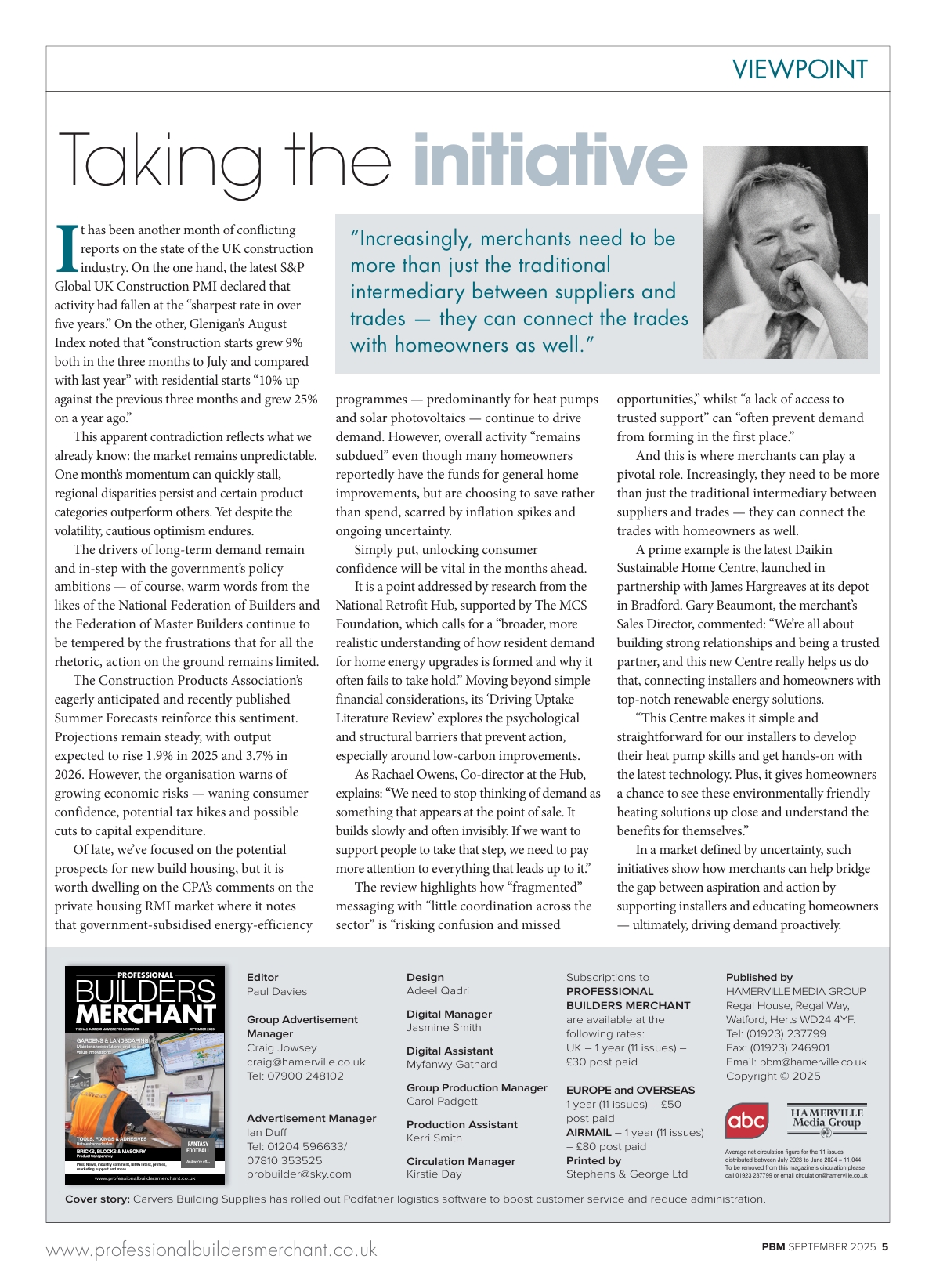
Writing in the September edition of PBM, editor Paul Davies reflects on the current market challenges and considers the issue of unlocking consumer confidence.
It has been another month of conflicting reports on the state of the UK construction industry. On the one hand, the latest S&P Global UK Construction PMI declared that activity had fallen at the “sharpest rate in over five years” (see Editor’s note update below…). On the other, Glenigan’s August Index noted that “construction starts grew 9% both in the three months to July and compared with last year” with residential starts “10% up against the previous three months and grew 25% on a year ago.”
This apparent contradiction reflects what we already know: the market remains unpredictable. One month’s momentum can quickly stall, regional disparities persist and certain product categories outperform others. Yet despite the volatility, cautious optimism endures.
The drivers of long-term demand of course remain, and are in-step with the government’s policy ambitions — but progress continues to be tempered by the frustrations that for all the rhetoric, action on the ground remains limited.
The Construction Products Association’s eagerly anticipated and recently published Summer Forecasts reinforce this sentiment. Projections remain steady, with output expected to rise 1.9% in 2025 and 3.7% in 2026. However, the organisation warns of growing economic risks — waning consumer confidence, potential tax hikes and possible cuts to capital expenditure.
Of late, we’ve focused on the potential prospects for new build housing, but it is worth dwelling on the CPA’s comments on the private housing RMI market where it notes that government-subsidised energy-efficiency programmes — predominantly for heat pumps and solar photovoltaics — continue to drive demand. Yet overall activity “remains subdued” even though many homeowners have the funds for general home improvements, but are choosing to save rather than spend, scarred by inflation spikes and ongoing uncertainty.
Simply put, unlocking consumer confidence will be vital in the months ahead.
“Increasingly, merchants need to be more than just the traditional intermediary between suppliers and trades — they can connect the trades with homeowners as well.”
It is a point addressed by research from the National Retrofit Hub, supported by The MCS Foundation, which calls for a “broader, more realistic understanding of how resident demand for home energy upgrades is formed and why it often fails to take hold.” Moving beyond simple financial considerations, its ‘Driving Uptake Literature Review’ explores the psychological and structural barriers that prevent action, especially around low-carbon improvements.
As Rachael Owens, Co-director at the Hub, explains: “We need to stop thinking of demand as something that appears at the point of sale. It builds slowly and often invisibly. If we want to support people to take that step, we need to pay more attention to everything that leads up to it.”
The review highlights how “fragmented” messaging with “little coordination across the sector” are “risking confusion and missed opportunities,” whilst “a lack of access to trusted support” can “often prevent demand from forming in the first place.”
And this is where merchants can play a pivotal role. Increasingly, they need to be more than just the traditional intermediary between suppliers and trades — they can connect the trades with homeowners as well.
A prime example is the latest Daikin Sustainable Home Centre, launched in partnership with James Hargreaves at its depot in Bradford. Gary Beaumont, the merchant’s Sales Director, commented: “We’re all about building strong relationships and being a trusted partner, and this new Centre really helps us do that, connecting installers and homeowners with top-notch renewable energy solutions.
“This Centre makes it simple and straightforward for our installers to develop their heat pump skills and get hands-on with the latest technology. Plus, it gives homeowners a chance to see these environmentally friendly heating solutions up close and understand the benefits for themselves.”
In a market defined by uncertainty, such initiatives show how merchants can help bridge the gap between aspiration and action by supporting installers and educating homeowners — ultimately, driving demand proactively.

Editor’s note: Since publication, S&P Global has published its UK Construction PMI report for August. I don’t think it will come as a surprise to anyone to say that things haven’t exactly improved…










